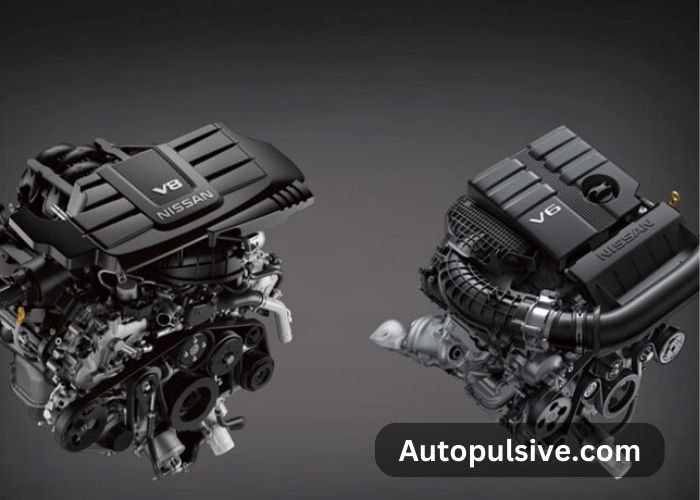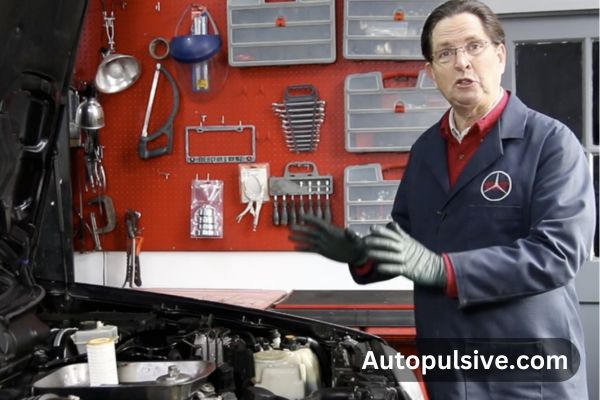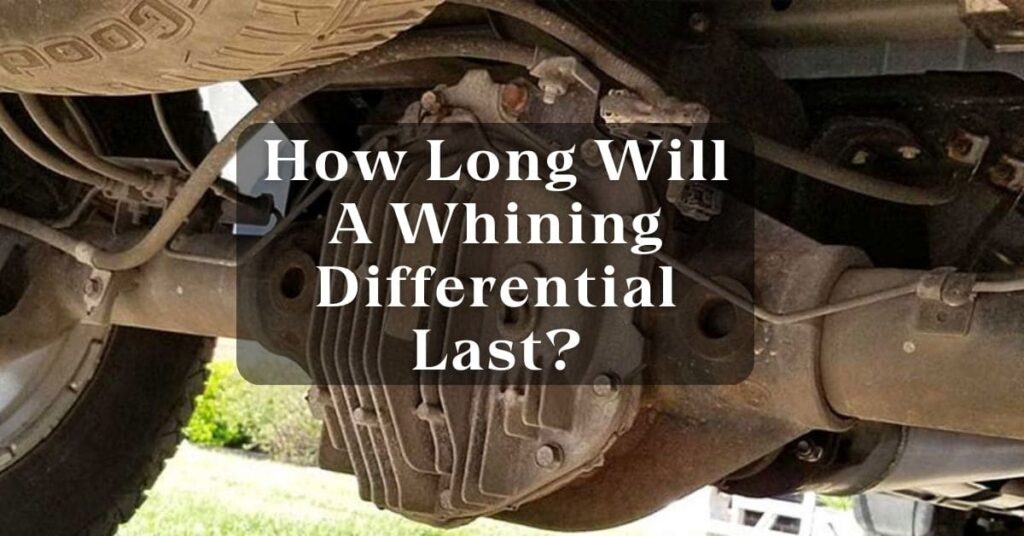Two common types of internal combustion engines found in automobiles are the V6 and V8 engines. The number of cylinders differentiates both of them.
V6 engines have six cylinders arranged in a V Shape, while V8 has eight cylinders arranged similarly. If you are planning to swap your V8 Engine in a V6 Car, it’s a major change that needs to be carefully planned and executed.
Now let’s have a look at “How can I turn my V6 car engine into a V8?”. It involves a complex process that needs mechanical expertise coupled with specifications of your vehicle and parts availability.

Why Is There a Need to Turn the V6 Car Engine Into a V8?
Well, if you enjoy feeling Power with performance then you’d like to replace or upgrade the V6 engine with the V8 engine. Some of the main reasons are:
1. Enhanced Performance with Power:
Compared to a V6, a V8 engine can boost more power and torque, improving the acceleration and hauling capacity.
2. Feel and Sound:
Driving a V8 engine can be more engaging and produces an exhaust sound that is deeper and more pleasant.
3. Personal Preference:
Leaving behind all the reasons some Automobile lovers prefer a V8 engine over a V6 engine.
Considerations to Be Taken Before Swapping the V6 Car Engine to the V8:
Before starting the conversion, we should also consider the following facts and figures:
1. Compatibility:
a) Physical Fit:
Make sure that the V8 engine is compatible to fit in the engine bay. So, examine carefully for accessories clearance, engine mount, and any other necessary modifications.

b) Drivetrain Compatibility:
To manage the V8 power and torque, modifications of the gearbox, Driveshaft, and any other upgrade may be necessary.
c) Electrical Compatibility:
The engine harness and ECU must be compatible with V8. A new ECU or modification in wiring may be necessary if required.
2. Drivability and Performance:
a) Power and Torque:
Evaluate the necessity of added power and torque and whether is it feasible for your driving needs and car usage.
b) Fuel Efficiency:
V8 engine is less fuel efficient as compared to V6.
c) Handling:
Due to the increased weight and power distribution. It might affect handling features and may require suspension alteration.

3. Legalities, Warranty, and Insurance:
a) Rules and Regulations:
Check your local rules and regulations for Engine swapping and modifications. Inspection or permit might be mandatory.
b) Emissions:
Make sure that the V8 engine you select meets the emission standard of your area. It might need any modifications.
c) Insurance:
Give the necessary information about the swap to your insurance provider as it may void your existing warranties. It may also affect your insurance premium and coverage.
4. Cost and Complexity While Swapping V6 Engine by V8:
a) Parts Cost and availability:
The Engine V8 is very expensive, like the other parts such as compatible transmission, drivetrain elements, wiring harness, ECU, and other parts/ accessories. It can also be difficult to locate the parts locally.
b) Labor:
It’s a costly procedure and accordingly needs specialized mechanics and tools to swap the engines. So be prepared to spend a lot of time and money on labor (Mechanics).

c) Hidden Challenges:
While swapping the engines you might face unexpected problems. You may also require additional modifications that will also increase overall Cost.
d) Resale Value:
Changing the major parts like the Engine turns off some potential purchasers and may devalue the vehicle.
5. Final Considerations:
a. Before modification consider whether the added performance justifies the investments and efforts.
b. Before modification consider the complexity and cost of the engine swapping
c. Consider the pros and cons carefully before making a decision.
Step-by-Step Procedure:
Required Material:
- Choose a V8 engine that is compatible with your car and meets the performance goals.
- Mounts and bracket for the V8 engine
- An upgraded Cooling system with accessories
- Customized adapter kit or wiring harness
- Compatible gearbox
- Exhaust system alteration
- Fuel system modification
- Reprogramming of ECU
Procedure to Convert a V8 Engine In A V6 Car:
Step 1- Engine Exclusion and Bay Setup:
Unplug and remove all the parts of the V6 engine from the car. Now thoroughly inspect and clean the engine bay to get it prepared for the installation of the V8 engine.
Step 2- Mounting Preparation and Engine Installation:
Install the V8 engine mounts and brackets that are needed to fit the dimensions carefully lower the V8 engine into the engine bay and tighten its position.
Step 3- Gearbox Compatibility:
Check for compatibility of the transmission or adapter kit with the V8 engine and replace it if necessary.
Step 4- Upgradation of Cooling System
To handle the extra heat produced by the larger V8 engine, upgrade the cooling system’s components. If needed install cooling fans, hoses, and high-capacity radiators.
Step 5- Modification of Fuel System and Wiring
To meet the requirements of the V8 engine adjust the fuel system and wiring harness accordingly. This alteration may require new wiring, ECU reprogramming, and fuel system upgrades.
Step 6- Exhaust System Adaption
Modification of the existing one or a new exhaust system that’s suitable for the V8 engine should be installed to maximize performance.
Step 7 – Tuning of the Engine Control Unit
To maximize performance and ensure accurate functionality with the V8 engine, Reprogramming or tuning is required. If required modify the idle speed settings, sensor calibration, fuel, and ignition maps.
Video Guide of Swapping V8 engine by V6:
Pros and Cons of Replacing the V6 Car Engine With V8:
Pros of Swapping V8 Engine by V6:
a) Enhanced Power and Torque:
When compared to the V6 engine, the V8 engine has more horsepower and torque, which improves acceleration and towing capacity.
b) Improved Sound and Driving Experience:
For enthusiasts, a V8 engine deeper exhaust tone and rapid throttle characteristics can provide a more satisfying driving experience.
c) Possibility of higher resale value:
A car with a V8 engine might fetch more money for a car sale than one with a V6 engine, depending on consumer demand.
d) Versatility and customization possibilities:
Upgrading to a V8 engine gives enthusiasts access to a plethora of aftermarket performance enhancements and customization options that let them personalize their cars to fit their unique tastes and driving styles.
Cons Swapping V8 Engine by V6:
a) Higher cost and complexity:
Conversion of a V6 engine to a V8 is a highly expensive and time-consuming process as it involves the purchase of a new engine, specialized parts, labor, and additional expenses.
b) Legal and Regulatory Issues:
Rules defining the safety requirements, emission compliance, and vehicle modifications apply to engine swaps, Noncompliance may result in Driving privileges restriction and legal fines.
c) Voided Warranties and Insurance Issues:
Swapping your car engine may void existing warranties and need specialized insurance coverage.
d) Duel efficiency and emissions compliance:
Despite the power and performance, a V8 engine may use more fuel and emit more emissions than V6 engines.
Conclusion:
Transforming a V6 engine into a V8 is a major project. It needs to be well-planned regarding compatibility, legalities, expenses, and performance requirements. Even if it has advantages like more power, a better driving experience, and customization choices, it’s important to balance these against any potential disadvantages.
As well as make sure it complies with all applicable rules and regulations. Enthusiasts can accomplish a V6 to V8 conversion and experience the performance and delight it delivers by making educated judgments and taking the required safety precautions.
Also Read:
- Why Does My Car Tire Lose 5 PSI in a Week?
- Why do my RC car’s tires wear out so fast? Tips to Maintain Performance Over Time
- Is Driveshaft Play Normal? 6 Causes & Fixes
- Is A 1.6 Engine Good For First Car? Make A Best Decision
- How Long Will A Whining Differential Last? Understanding Of Its Lifespan, Factors, Impacts, And Maintenance
- Why Does My Car Tire Lose 5 PSI in a Week? - 4 November 2024
- How Do You Inflate A Car Tire With A Bike Pump? A Practical Guide in 5 Easy Steps - 30 October 2024
- Why do my RC car’s tires wear out so fast? Tips to Maintain Performance Over Time - 18 October 2024


